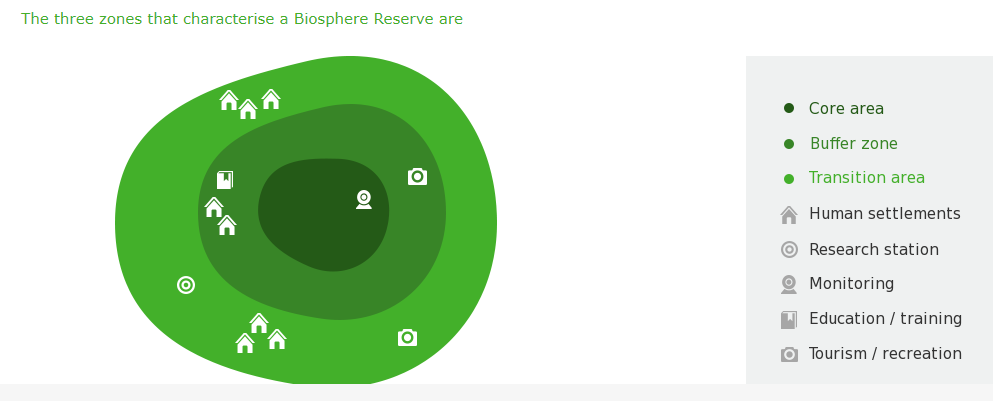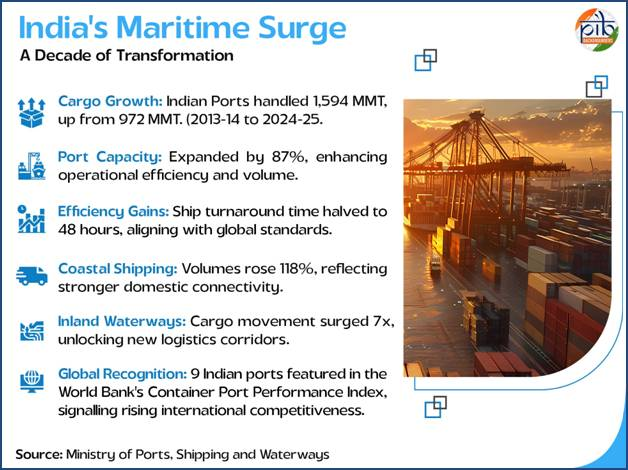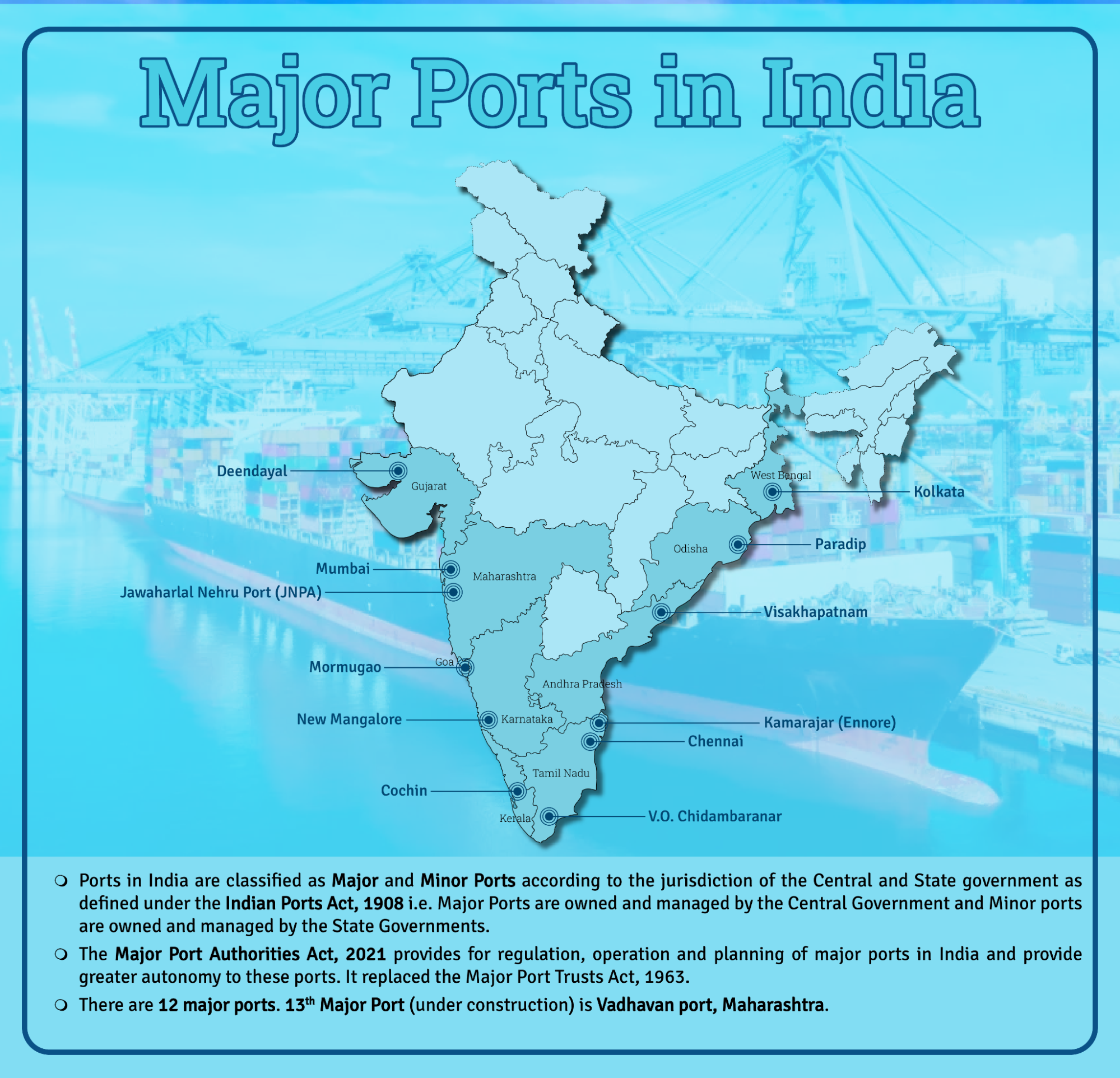Ladakh's Protest for Sixth Schedule Status
For Prelims: Sixth Schedule of the Constitution, Scheduled Tribes, Autonomous District Councils
For Mains: Sixth Schedule and tribal autonomy in India, Governance challenges in autonomous councils
Why in News?
Ladakh has witnessed renewed protests demanding statehood and Sixth Schedule status, highlighting discontent among its predominantly tribal population over the lack of constitutional safeguards since its reorganization as a Union Territory in 2019.
What is the Sixth Schedule of the Indian Constitution?
- About: The Sixth Schedule, enshrined in Articles 244(2) and 275(1), is based on the Bardoloi Committee’s recommendations to safeguard tribal governance.
- Provisions: It empowers Governors to establish Autonomous District Councils (ADCs) and Autonomous Regional Councils (ARCs), providing self-rule to tribal areas.
- ARCs allow the Governor to divide an autonomous district into separate regions if it has different Scheduled Tribes.
- Each ADC usually has up to 30 members (26 elected, 4 nominated by the Governor) serving a five-year term (Bodoland Territorial Council in Assam is an exception, it has more than 40 members).
- Currently, the Northeast has 10 ADCs across Assam, Meghalaya, Mizoram, and Tripura.
- Purpose: The Schedule was designed to protect tribal identity, culture, land, and governance systems in areas where tribal populations are significant, while still keeping them within the broader framework of the Indian Union.
- Powers of ADCs and ARCs:
-
Legislative Powers: Councils can make laws on subjects such as land, forests, agriculture, village administration, inheritance, marriage/divorce, social customs, and mining (with restrictions). All laws require the Governor’s assent.
-
Judicial Powers: Councils can establish courts to try cases involving Scheduled Tribes, except for serious crimes.
-
Executive Powers: Councils can set up and manage schools, markets, dispensaries, roads, water bodies, and local infrastructure.
-
Financial Powers: Can levy and collect taxes, tolls, and land revenue within their areas.
-
Why does Ladakh Demand Sixth Schedule Status?
- Loss of Representation: After Jammu and Kashmir’s 2019 reorganization, Ladakh became a Union Territory without a legislature, reducing local autonomy and representation.
- Previously, it had four assembly members and a more empowered LAHDC. Now, decision-making is largely bureaucratic, causing fears of outsider dominance, creating a sense of distance from governance.
- Land Protection and Tribal Identity Concerns: Changed domicile policy in J&K has sparked fears over land ownership, jobs, and demography in Ladakh. Communities fear dilution of their cultural and linguistic heritage.
- The National Commission for Scheduled Tribes (NCST) in 2019 suggested including Ladakh under the Sixth Schedule, since Over 97% of Ladakh’s population is tribal. Land ownership was already restricted to protect locals. The region’s unique culture and ecology require special safeguards.
- Limited Autonomy of Existing Councils: Ladakh has two Hill Councils (Leh and Kargil), but they are not under the Sixth Schedule and have very restricted powers, mostly related to local taxation and land allotment.
- Environmental Safeguards: Ladakh’s fragile ecosystem is under growing pressure from mass tourism (5.25 lakh tourists in 2023) and large-scale infrastructure projects such as the proposed mega solar park and geothermal energy zones.
- Incorporating the Sixth Schedule could empower local councils to enforce sustainable development and protect traditional land-use practices.
- Economic Concerns: Graduate unemployment rate ~26.5%, much higher than the national average. Lack of local job creation and a Public Service Commission fuels frustration.
- Greater autonomy in development planning could align policies with local needs.
What are the Challenges in Granting Sixth Schedule Status to Ladakh?
- Constitutional Limits: Sixth Schedule was meant for northeastern tribal areas, so applying it to Ladakh would need a constitutional amendment.
- Security Concerns: Ladakh is a border region, and giving more autonomy could make coordination of security and administration harder.
- Administrative Issues: Experience from northeastern states shows Autonomous Councils often rely on state funds, leading to financial dependency and may face political interference, reducing their effectiveness.
- Local councils may lack trained staff and governance experience to manage new powers.
- Balancing Development and Autonomy: Managing infrastructure, tourism, and projects while protecting tribal lands and the environment is tricky.
- Precedent Risks: Granting this status could encourage other tribal regions to demand similar powers, complicating national policy.
Government Alternative Measures in Response to Local Demands
- Employment Reservations: 85% of government jobs reserved for locals (as per Domicile Certificate Rules 2025).
- Political Representation: One-third of seats in Ladakh Autonomous Hill Development Councils (LAHDC) reserved for women.
- This is in line with the 33% reservation for women in panchayats introduced after the 73rd Amendment Act.
- Cultural Protection: Official languages include English, Hindi, Urdu, Bhoti, and Purgi, with support for promoting Shina, Brokskat, Balti, and Ladakhi.
How can Ladakh Balance Autonomy While Preserving its Culture and Ensuring Security?
- Environmental Legislative Authority: Empower LAHDCs to legislate on renewable energy projects, water resources, and eco-sensitive tourism, ensuring development aligns with Ladakh’s fragile ecosystem.
- Ensuring Security and Strategic Oversight: Maintain central oversight on border management, defense, and strategic infrastructure, given Ladakh’s sensitive location.
- Develop mechanisms for coordination between local councils and Union Territory administration for quick response during security contingencies.
- Cultural Territorial Zones: Establish ‘Cultural Heritage Zones’ where only locals can own property or operate businesses, safeguarding traditional communities and languages.
- Local Resource Sovereignty: Grant councils exclusive rights over high-value natural resources (salt, medicinal plants, sand, and minerals) with revenue used for local development and ecological conservation.
- Youth & Innovation Hubs: Set up local innovation centers focused on renewable energy, sustainable tourism, and handicrafts, giving youth employment while protecting culture.
Conclusion
- Ladakh’s demand for the Sixth Schedule highlights the need to balance autonomy, identity, and security. Granting more powers to the Ladakh Autonomous Hill Development Council, while keeping central oversight on security, could be a practical middle path to rebuild trust and ensure development respects Ladakh’s unique culture and ecology.
|
Drishti Mains Question: Q. Discuss the challenges and opportunities in extending Sixth Schedule protections to Ladakh. |
UPSC Civil Services Examination, Previous Year Questions (PYQs)
Prelims
Q. Which of the following provisions of the Constitution of India have a bearing on Education? (2012)
1. Directive Principles of State Policy
2. Rural and Urban Local Bodies
3. Fifth Schedule
4. Sixth Schedule
5. Seventh Schedule
Select the correct answer using the codes given below:
(a) 1 and 2 only
(b) 3, 4 and 5 only
(c) 1, 2 and 5 only
(d) 1, 2, 3, 4 and 5
Ans: D
Mains:
Q. Why are the tribals in India referred to as ‘the Scheduled Tribes? Indicate the major provisions enshrined in the Constitution of India for their upliftment. (2016)
Cold Desert Biosphere Reserve
Why in News?
The Cold Desert Biosphere Reserve (CDBR) in Himachal Pradesh, along with 25 other biosphere reserves across several countries, has been included in World Network of Biosphere Reserves (WNBR) by UNESCO.
- São Tomé and Príncipe (island country of Central Africa) becomes the first state to have its entire territory designated as a biosphere reserve.
What are Key Facts Regarding the Cold Desert Biosphere Reserve?
- Location: In the Trans-Himalayan region, the reserve covers the entire Spiti Wildlife Division and adjoining areas of the Lahaul Forest Division, including Baralacha Pass, Bharatpur, and Sarchu (altitudes 3,300–6,600 m).
- It was declared a biosphere reserve in 2009, becoming India’s 16th and first high-altitude cold desert biosphere reserve.
- Landscape: It integrates Pin Valley National Park, Kibber Wildlife Sanctuary, Chandratal Wetland, featuring windswept plateaus, glacial valleys, alpine lakes, and high-altitude desert, making it one of the coldest and driest ecosystems in WNBR.
- Floral Diversity: It contains 14 endemic, 68 native, and 62 threatened plant species, including key medicinal plants such as Salix spp., Betula utilis etc.
- It supports hardy alpine grasses, medicinal herbs, and rare stands of Willow-leaved sea-buckthorn, Himalayan birch, and Persian juniper.
- Faunal Diversity: It is home to rare and endangered species, including the snow leopard, Himalayan wolf, Tibetan antelope, Himalayan brown bear, Himalayan griffon, Himalayan ibex, bearded vulture, red fox, and Tibetan gazelle.
What is the World Network of Biosphere Reserves?
- About: The World Network of Biosphere Reserves (WNBR) consists of a dynamic and interactive network of sites of excellence.
- Objective: It promotes North-South, South-South and South-North-South collaboration and represents a unique tool for international cooperation through the exchange of experiences and know-how, capacity-building and the promotion of best practices among Biosphere Reserves.
- UNESCO Affiliation: The WNBR operates under the United Nations Educational, Scientific and Cultural Organization’s (UNESCO) Man and the Biosphere Programme.
- Global Coverage: The WNBR now includes 785 sites in 142 countries, with an additional one million sq km of natural areas brought under protection since 2018 — equivalent to the size of Bolivia.
Biosphere Reserve
- About: A Biosphere Reserve (BR) is an international designation by UNESCO for significant natural and cultural landscapes, covering extensive terrestrial, coastal, or marine ecosystems, or a combination of these.
- They are an in situ conservation method that balances economic and social development with cultural and natural preservation, exemplifying harmonious human-environment coexistence.
- Function: Biosphere reserves serve three main functions:
- Conservation: Protecting biodiversity and cultural diversity.
- Economic Development: Promoting socio-culturally and environmentally sustainable growth.
- Logistic support: Facilitating development through research, monitoring, education, and training.
- Structure of BR: Biosphere reserves achieve their functions through three zones:
- Core areas: Strictly protected for conservation of landscapes, ecosystems, species, and genetics (e.g., National Park or Wildlife Sanctuary)
- Buffer zones: Surround the core for eco-friendly activities supporting research, monitoring, training, and education.
- Transition area: Where communities engage in socio-culturally and ecologically sustainable economic and human activities.
- Criteria for Designation of BR: A site should have a protected, minimally disturbed core area of conservation value, large enough to sustain viable populations across all trophic levels and representing a bio-geographical unit.
- It should involve local communities, incorporating their knowledge in biodiversity preservation, and support the preservation of traditional tribal or rural lifestyles for harmonious environmental use.
Biosphere Reserve in India
- Overview: India launched the Biosphere Reserve scheme in 1986, guided by the UNESCO MAB Programme, as India is a signatory to the landscape approach promoted by MAB.
- Financial Assistance: Under the scheme, funding is provided in a 90:10 ratio to the North Eastern Region States and three Himalayan states, and in a 60:40 ratio to other states for the maintenance, improvement, and development of biosphere reserves.
- The State Government prepares the Management Action Plan for each reserve, which is then approved and monitored by the Central MAB Committee.
- BR in India: India has 18 biosphere reserves, of which 13 are now listed in UNESCO’s WNBR.
Conclusion
The Cold Desert Biosphere Reserve exemplifies high-altitude ecosystem conservation and sustainable human-environment coexistence. Its inclusion in UNESCO’s World Network of Biosphere Reserves reinforces India’s commitment to biodiversity protection, cultural preservation, and sustainable development through integrated management, research, and community participation under the MAB Programme framework.
|
Drishti Mains Question: Q. Explain the concept of a Biosphere Reserve as defined by UNESCO's Man and the Biosphere (MAB) Programme. How does its three-zonal structure aim to reconcile the conflict between conservation and development? |
UPSC Civil Services Examination, Previous Year’s Question (PYQs)
Prelims
Q.1 Consider the following pairs: (2013)
- Nokrek Biosphere Reserve : Garo Hills
- Logtak (Loktak) Lake : Barail Range
- Namdapha National Park : Dafla Hills
Which of the above pairs is/are correctly matched?
(a) 1 only
(b) 2 and 3 only
(c) 1, 2 and 3
(d) None
Ans: (a)
Q.2 The most important strategy for the conservation of biodiversity together with traditional human life is the establishment of (2014)
(a) biosphere reserves
(b) botanical gardens
(c) national parks
(d) wildlife sanctuaries
Ans: (a)
118th Birth Anniversary of Bhagat Singh
Why in News?
The nation paid homage to revolutionary Bhagat Singh on his 118th birth anniversary on 28th September, 2025.
What are Key Facts Related to Bhagat Singh?
- Early Life: Bhagat Singh, born on 28th September 1907 in Banga, Punjab (now Pakistan), came from a Sikh family active in the freedom struggle.
- His father Kishan Singh and uncle Ajit Singh were notable revolutionaries, with his uncle deported to Mandalay and later associated with the San Francisco-based Ghadar Party.
- Formative Experiences: At the age of 12, Bhagat Singh witnessed the Jallianwala Bagh massacre, shaping his resolve for independence. He later joined National College, Lahore, founded by Lala Lajpat Rai, where he was exposed to Swadeshi and revolutionary ideas.
- Revolutionary Politics: In 1924, Bhagat Singh joined the Hindustan Republican Association (HRA), which in 1928 became the Hindustan Socialist Republican Association (HSRA).
- In 1926, he founded the Naujawan Bharat Sabha to mobilize youth for the freedom movement.
- In 1929, Bhagat Singh and Batukeshwar Dutt threw low-intensity bombs in the Central Legislative Assembly to protest the Public Safety Bill (suppressing political activities and deporting individuals) and the Trade Dispute Bill (curbing workers’ right to strike).
- Trial, and Execution: Bhagat Singh, Rajguru, and Sukhdev were convicted in the Lahore Conspiracy Case (1928), which involved the murder of British police officer J.P. Saunders in Lahore, carried out to avenge the death of Lala Lajpat Rai.
- All three were hanged on 23rd March 1931 in Lahore Central Jail.
- Ideology and Writings: Bhagat Singh was a firm atheist and socialist, influenced by thinkers such as Marx, Lenin, Trotsky, and Bakunin.
- His writings, including “Why I Am an Atheist” reflect his belief in rationalism, equality, and social justice.
- In the 1920s, Bhagat Singh wrote for Urdu and Punjabi newspapers in Amritsar, as well as the journal of the Kirti Kisan Party- ‘Kirti’, and briefly for the Veer Arjun newspaper in Delhi.
- He often used pseudonyms such as Balwant, Ranjit, and Vidhrohi.
- Legacy: Bhagat Singh, honored as Shahid-e-Azam, coined the slogan Inquilab Zindabad (Long Live the Revolution), which became a powerful rallying cry for India’s freedom struggle.
- Every year on 23rd March, India observes Shaheed Diwas (Martyrs’ Day) to honor the sacrifice of freedom fighters Bhagat Singh, Rajguru, and Sukhdev.
UPSC Civil Services Examination, Previous Year Questions (PYQ)
1. Invitation to Congress to participate in the Round Table Conference
2. Withdrawal of Ordinances promulgated in connection with the Civil Disobedience Movement
3. Acceptance of Gandhiji’s suggestion for enquiry into police excesses
4. Release of only those prisoners who were not charged with violence
Select the correct answer using the code given below:
(a) 1 only
(b) 1, 2 and 4 only
(c) 3 only
(d) 2, 3 and 4 only
Ans: (b)
Indian Ports Act, 2025
Why in News?
The Indian Ports Act, 2025, passed by Parliament in August 2025, replaces the century-old Indian Ports Act, 1908. It introduces a modern legal framework aimed at integrated port development, cooperative federalism, and global competitiveness.
What are the Key Provisions of the Indian Ports Act, 2025?
- Statutory Bodies: The Act formally recognizes State Maritime Boards established by coastal states and empowers them to manage non-major ports (covering planning, licensing, tariffs, and compliance).
- Under the act, the Maritime State Development Council was given statutory status to guide data transparency, policy advice, national planning, and centre–State coordination.
- Port Officers: The Act designates the conservator - appointed by the government - as the port officer, with powers over vessel movement, fee recovery, disease control, and penalty adjudication.
- Dispute Resolution: The Act mandates setting up Dispute Resolution Committees (DRCs) to resolve disputes at non-major ports; appeals lie with High Courts, and arbitration is permitted for quicker resolution.
- Tariff Regulation: At major ports, tariffs are set by the Major Port Authority Board or a company’s Board of Directors, while at non-major ports, they are fixed by the State Maritime Board or concessionaire, with mandatory online publication for transparency.
- Safety & Sustainability: The Act enforces penalties for safety breaches, aligns with global conventions like MARPOL (the International Convention for Prevention of Marine Pollution For Ships) and Ballast Water Management, mandates pollution control and disaster readiness, and requires central audits for compliance.
- Digitalisation & Ease of Doing Business: Maritime Single Window and Advanced Vessel Traffic Systems to improve efficiency and reduce congestion.
Ports In India
- Ports are vital to India’s economy, handling about 95% of export and import (EXIM) cargo by volume and 70% by value.
- With 12 major (13th major port at Vadhavan, Maharashtra is still in development phase) and over 200 non-major ports, they drive trade, industrial growth, and connectivity. In the past decade, Indian ports have modernized to global standards, boosting efficiency and India’s maritime standing.
UPSC Civil Services Examination, Previous Year Question (PYQ)
Prelims
Q. What is the importance of developing Chabahar Port by India? (2017)
(a) India’s trade with African countries will enormously increase.
(b) India’s relations with oil-producing Arab countries will be strengthened.
(c) India will not depend on Pakistan for access to Afghanistan and Central Asia.
(d) Pakistan will facilitate and protect the installation of a gas pipeline between Iraq and India.
Ans: (c)
Environmental Accounting on Forest 2025
Why in News ?
The Ministry of Statistics and Programme Implementation (MoSPI) released 8th issue of its environmental accounts publication, “Environmental Accounting on Forest – 2025”
- This is the first dedicated report on forest accounting, based upon the UN System of Environmental Economic Accounts (SEEA) Framework.
What is Environmental Accounting on Forest 2025?
- About: It is compiled with the objective of presenting comprehensive information on forest accounts at both the national and state levels, in accordance with the SEEA framework. The publication is compiled in two separate volumes.
- Volume I outlines the methodology and national-level data for various forest ecosystem accounts.
- Volume II presents state and UT-level data on decadal changes in forest assets, extent, condition, and services, along with a review of related studies in select regions.
- Key Findings:
-
Physical Asset Account (2010–11 to 2021–22)
-
India’s forest cover increased by 17,444.61 sq. km (22.50%), reaching 7.15 lakh sq. km (21.76% of geographical area)
- Major contributors to forest cover gains: Kerala, Karnataka, and Tamil Nadu.
-
- Extent Account (2013–2023):
- Net increase of 3,356 sq. km in forest extent, primarily due to reclassification and boundary adjustments.
- Top states showing significant gains in Recorded Forest Area (RFA): Uttarakhand, Odisha, and Jharkhand.
- Condition Account (2013–2023):
- Focuses on ecosystem quality, particularly the growing stock (volume of usable wood in living trees).
- Growing Stock increased by 305.53 million cubic metres (cum), reflecting a 7.32% rise.
- Largest contributors to increase in growing stock: Madhya Pradesh, Chhattisgarh, and Telangana.
- Service Accounts (Ecosystem Services Valuation)
- Provisioning Services (timber and non-timber products): Valuation reached about 0.16% of GDP in 2021–22.
- Top contributors: Maharashtra, Gujarat, and Kerala.
- Regulating Services (carbon retention and climate regulation):
- Valuation rose to about 2.63% of GDP in 2021–22.
- Top contributors: Arunachal Pradesh, Uttarakhand, and Assam.
-
UN System of Environmental Economic Accounts (SEEA)
- The System of Environmental-Economic Accounting (SEEA) is an international statistical framework that integrates economic and environmental data to measure both the environment’s contribution to the economy and the economy’s impact on the environment.
- It was developed by the United Nations, European Commission, and Food and Agriculture Organization (FAO) in 2012.
- India formally adopted the SEEA framework in 2018.
|
Read More: Natural Capital Accounting and Valuation of the Ecosystem Services Project |
UPSC Civil Services Examination Previous Year Question (PYQ)
Prelims
Q. With reference to the 'Global Climate Change Alliance (GCCA)', which of the following statements is/are correct?
1. It is an EU initiative to strengthen dialogue and cooperation on climate change with developing countries.
2. India is a member country of the Alliance.
Options:
(a) 1 only
(b) 2 only
(c) Both 1 and 2
(d) Neither 1 nor 2
Ans: (a)
China to Retain ‘Developing Status’ but Forgo WTO Benefits
China announced it will no longer seek Special and Differential Treatment (SDT) in future World Trade Organisation (WTO) agreements, though it will retain its developing country status.
- China, now the world’s second-largest economy at USD 19 trillion, has grown from USD 1.3 trillion since joining the WTO in 2001.
WTO Developing Nation Status
- Self-Declaration: WTO lacks an official definition of developing or developed nations; members self-designate their status, though others can challenge if benefits are misused.
- Self-declared developing country status at the WTO does not guarantee benefits under unilateral schemes like Generalized System of Preferences (GSP).
- China’s decision to forgo SDT is voluntary, not imposed.
- It will retain its developing country status and past rights, while projecting itself as a responsible major developing country ready to accept stricter trade obligations to reinforce multilateralism.
- Significance of the Status: SDT provides developing and least-developed countries with greater flexibility in meeting obligations, such as longer timeframes, preferential treatment, technical assistance, and exemptions.
- It is designed to promote equity in trade rules by acknowledging the varying capacities of member countries.
- Implications: This move breaks a major negotiating logjam by sidestepping the contentious developed vs. developing debate, potentially unlocking progress on new trade agreements.
- This development allows India to advocate WTO reforms distinguishing large middle‑income from low‑income developing nations, and to push for clear, fair criteria for SDT to end “self‑designation” ambiguities.
|
Read More: Developing Country Tag to China: WTO |
Nightmare Bacteria
Drug-resistant nightmare bacteria infections are surging in the United States, with NDM-1 (New Delhi Metallo-beta-lactamase-1) cases rising fivefold from 2019–2023.
Nightmare Bacteria
- About: Nightmare bacteria are Carbapenem-resistant Enterobacteriaceae (CRE) like Klebsiella pneumoniae and E. coli, resistant to last-resort carbapenem antibiotics.
- They are called “nightmares” because they spread resistance genes easily and cause severe, often fatal infections in the bloodstream, lungs, and urinary tract.
- Global Spread: This is not US-specific; NDM-producing bacteria are widespread in South Asia, and international travel and trade make Antimicrobial Resistance (AMR) a global challenge.
- AMR occurs when microorganisms (bacteria, viruses, fungi, parasites) develop resistance to antibiotics and antivirals, making infections harder to treat and easier to spread.
NDM-1 Gene
- NDM-1 is a gene found in certain bacteria that enables them to produce an enzyme called New Delhi metallo-beta-lactamase.
- This enzyme makes the bacteria resistant to many powerful antibiotics, including some of the last-resort drugs.
|
Read More: India’s AMR Crisis |





